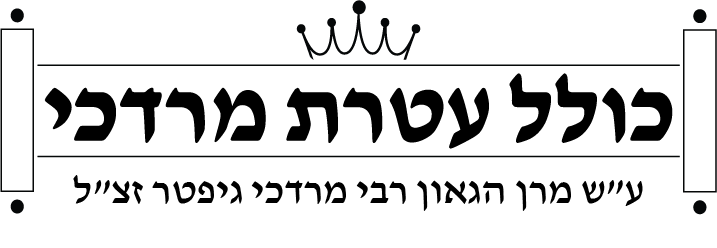Shemini Atzeres
An English abridgement of a lecture delivered on Yom Tov, and published in Pirkei Emunah pp.333-334. Translated by Rabbi Israel Schneider.
The Sages have compared Sukkos and Shemini Atzeres to one who invites his many friends to a joyous affair. As the party ends, and the guests drift away, the host invites his most beloved friend to a tete a tete, in which only he and his beloved intimately rejoice. [The seven days of Sukkos correspond to the general party, in which all the world’s denizens celebrate. Shemini Atzeres, however, is HaShem’s private party with the Jewish Nation.]
The other participants who leave the party and return to their homes and day-to-day lives suffer the wrenching effect of being shunted from one state to another, without being able to incorporate the joy of the party into their ordinary lives. This prevents them from experiencing the joy of the celebration to its fullest extent, because they understand that this joy is but ephemeral, and cannot be realized in their day-to-day lives. Not so for the one who remains for an extra day of rejoicing after the completion of the party proper. By spending enjoyable time in solitude with the host, and reliving the majestic emotions which he has attained, he enables himself to integrate the exalted joy which he has experienced into his regular life.
In the month of Ethanim (a Biblical reference to Tishrei, see Kings I 8:2, and Rosh HaShanah 11a), a person, by dint of his teshuvah, can reach the exalted level of communion with HaShem. Secure in his belief that HaShem will pardon him, a person can rejoice in the joy of the forgiveness of his sins. By experiencing this closeness with G-d, he will realize that there is no necessity for a dwelling of permanence, in which a person ordinarily places his trust. Even in a temporal dwelling, he will find strength, with the knowledge that he stands fully protected by Divine Providence.
He is involved in the mitzvos of the four species, and of dwelling in the sukkah—all of which indicate his exalted position as he rejoices with HaShem, as it is written, “Let us rejoice and be glad with Him” (Psalms 118:24).
As the holiday comes to a close, and this sublime life comes to an abrupt end, a person returns to the mundane life of this materialistic world.
This sudden change may constitute a spiritual crash-landing, and the going to waste of eternal treasures which he had acquired during the Yom Tov. However, on Shemini Atzeres, one prepares for this transition. It is a day which lacks any specific mitzvah-act. Instead, he rejoices only with his heart and soul, so that he could incorporate his spiritual acquisitions into the course of his daily living in the antechamber of this world, and thereby attain the life of the World-to-Come. This is the concept of Shemini Atzeres, which is appended to the festival of Sukkos and its joy, and by means of this Yom Tov, one will make it possible for himself to actualize the joy of Sukkos in his daily life.
There is a second concept, as well, which pertains to the holiday of Shemini Atzeres. The early authorities explain that Shemini Atzeres corresponds to the existence of the World-to-Come. Indeed, we have explained elsewhere that the psalm recited as the “Song of the Day” by the Levites on Shemini Atzeres: “For the conductor on the sheminis (Psalms 12),” is due to the fact that eight is the number associated with the Future Existence; see the writings of the Maharal in regard to the eight days of Channukah. The joy of Sukkos originates from that which the Holy One, blessed is He, rejoices with His Beloved, the Jewish Nation. During Sukkos, however, the entire world partners in this joy. Since this is a shared joy, it is therefore impossible, during this particular time, for a lover of G-d to meet in solitude with HaShem. The ultimate joy is on Shemini Atzeres, the day of total and exclusive oneness.
On this day, in contradistinction to the days of Sukkos, the Jew is not involved in any specific act of mitzvah. Rather it is an other-worldly joy, akin to that which is stated (Berachos 17a), “[the righteous] sit with their crowns on their heads, and delight in the Divine Glory.” This unparalleled joy derives its validity and strength from the force of the Torah, concerning which it is written, “The orders of HaShem are upright, gladdening the heart (Psalms 19:9).”
By means of studying the Torah, and actualizing its study by putting it into practice, a person can attain the uprightness with which he was created, and can liberate himself from the quest of many calculations which cause him to stray from the point of straightness.
It is for this reason that Simchas Torah was established on Shemini Atzeres, and not, as we might have otherwise thought, on Shavuos, the Day of the Giving of the Torah.
We rejoice with the joy of the Torah specifically on Shemini Atzeres, because that is the day reserved for the exalted joy which derives [only] from the study and the fulfillment of the Torah.
On Shemini Atzeres, then, we attain a level of joy that we have not attained heretofore during the days of Sukkos. It is only from this position of joy that we could once again enter the cycle of daily living so that our “mundane” lives can serve us as the antechamber for the World-to-Come.
Recommended Posts
A Talmid Reflects
December 31, 2020
By an Anonymous, Loving Talmid
February 12, 2018
Advice for Parents on Chanukah
February 12, 2018

